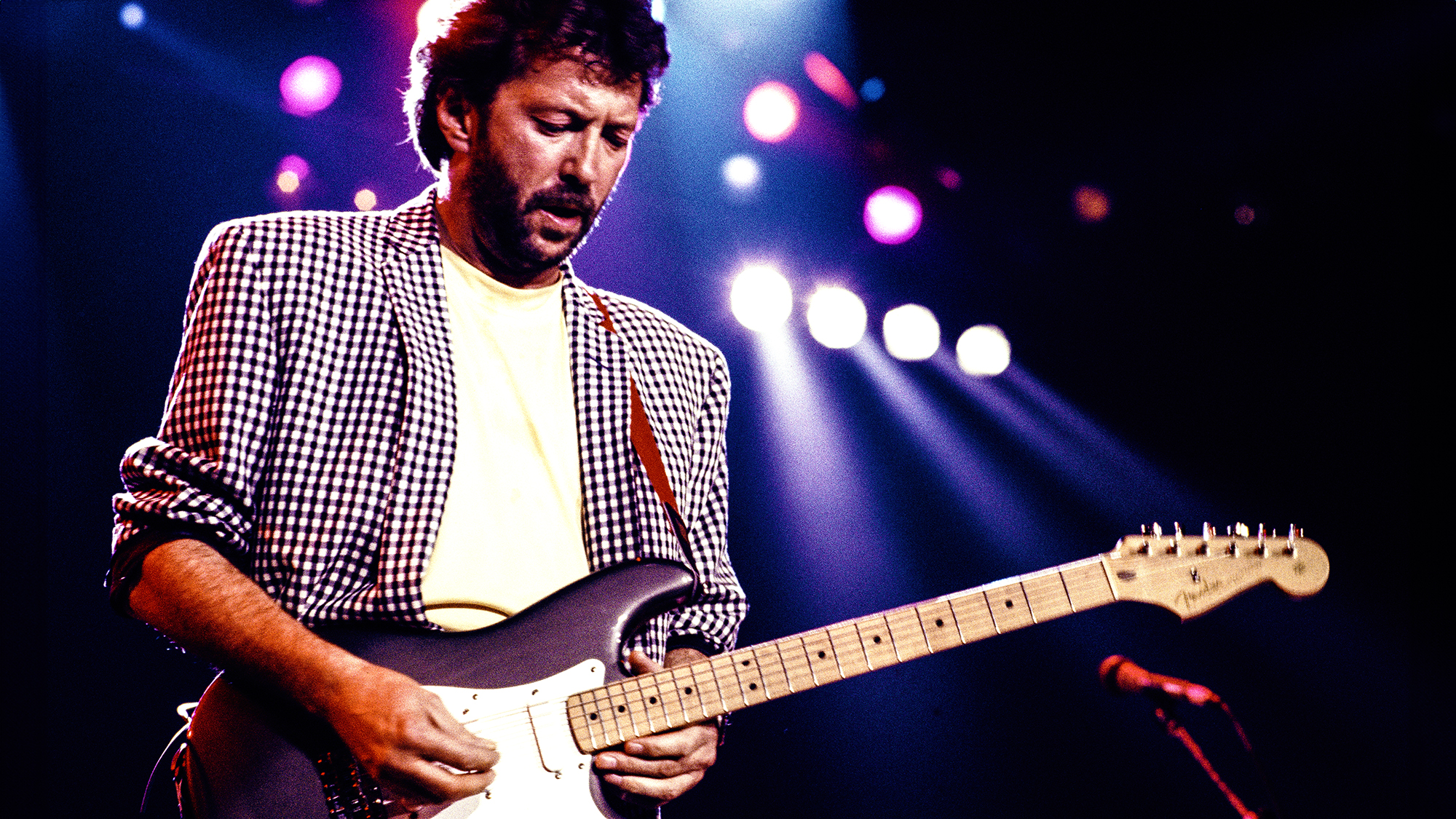"I'm a Guitar Freak. I Spend my Money on Snakes, Cars and Guitars": How I Recorded Use Your Illusion by Slash
Guns N' Roses 'Use Your Illusion' albums came out in September 1991. Slash told Guitar Player how he got his sound in this insightful interview from the archive.
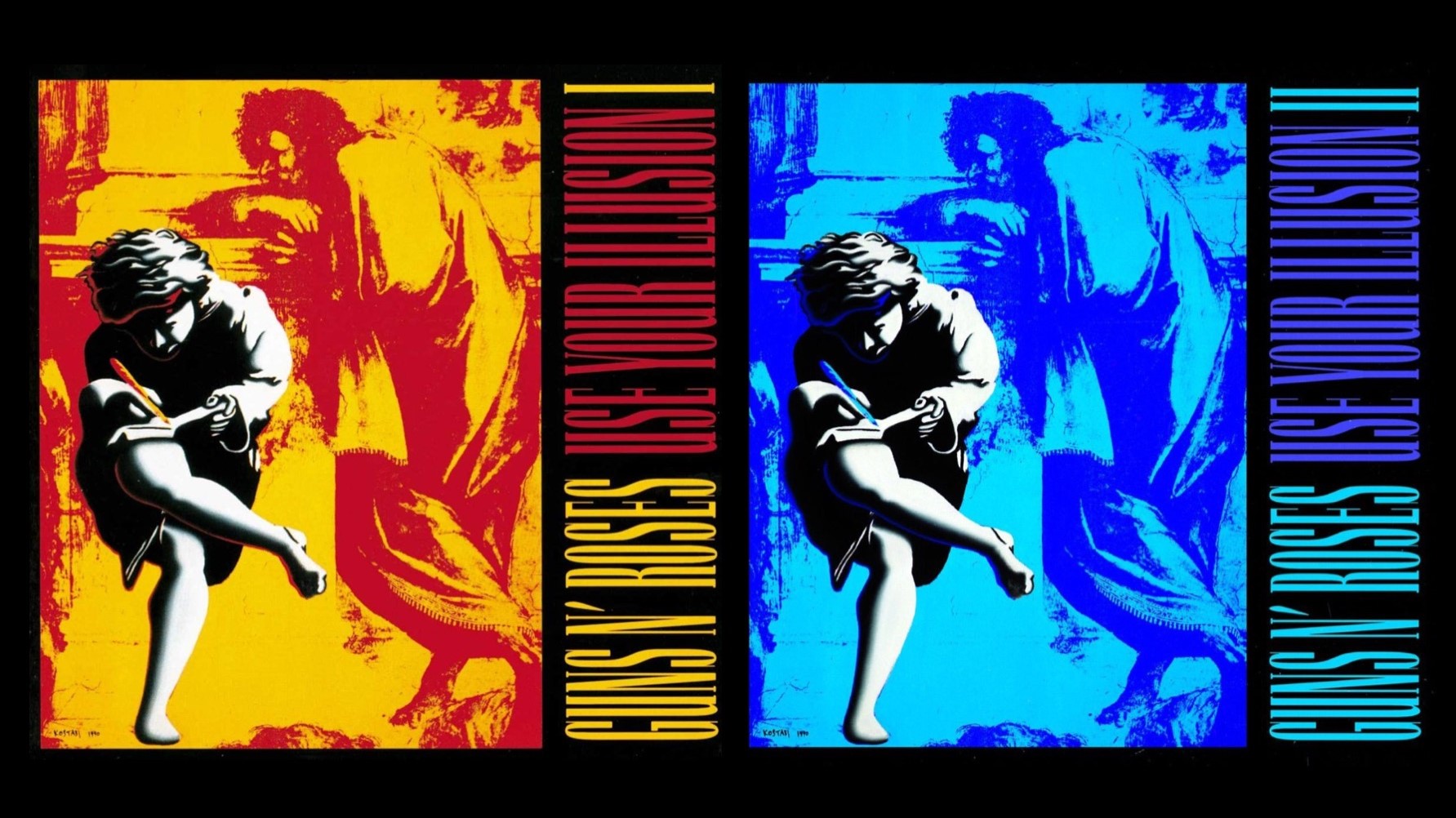
On 17 September 1991, Guns N' Roses released their much-anticipated Use Your Illusion albums. This double dose of hard rock hit the shelves in tandem, immediately peaking at the top of the charts. Supported by the lead single "You Could Be Mine," Use Your Illusion II reached the number one spot while Use Your Illusion I followed closely behind at number two. Bolstered by a massive world tour, both albums would eventually go on to reach multi-platinum status.
Later that year, Guitar Player caught up with Slash to talk about the "blood, sweat, and tears" recordings. Here's what he had to say...
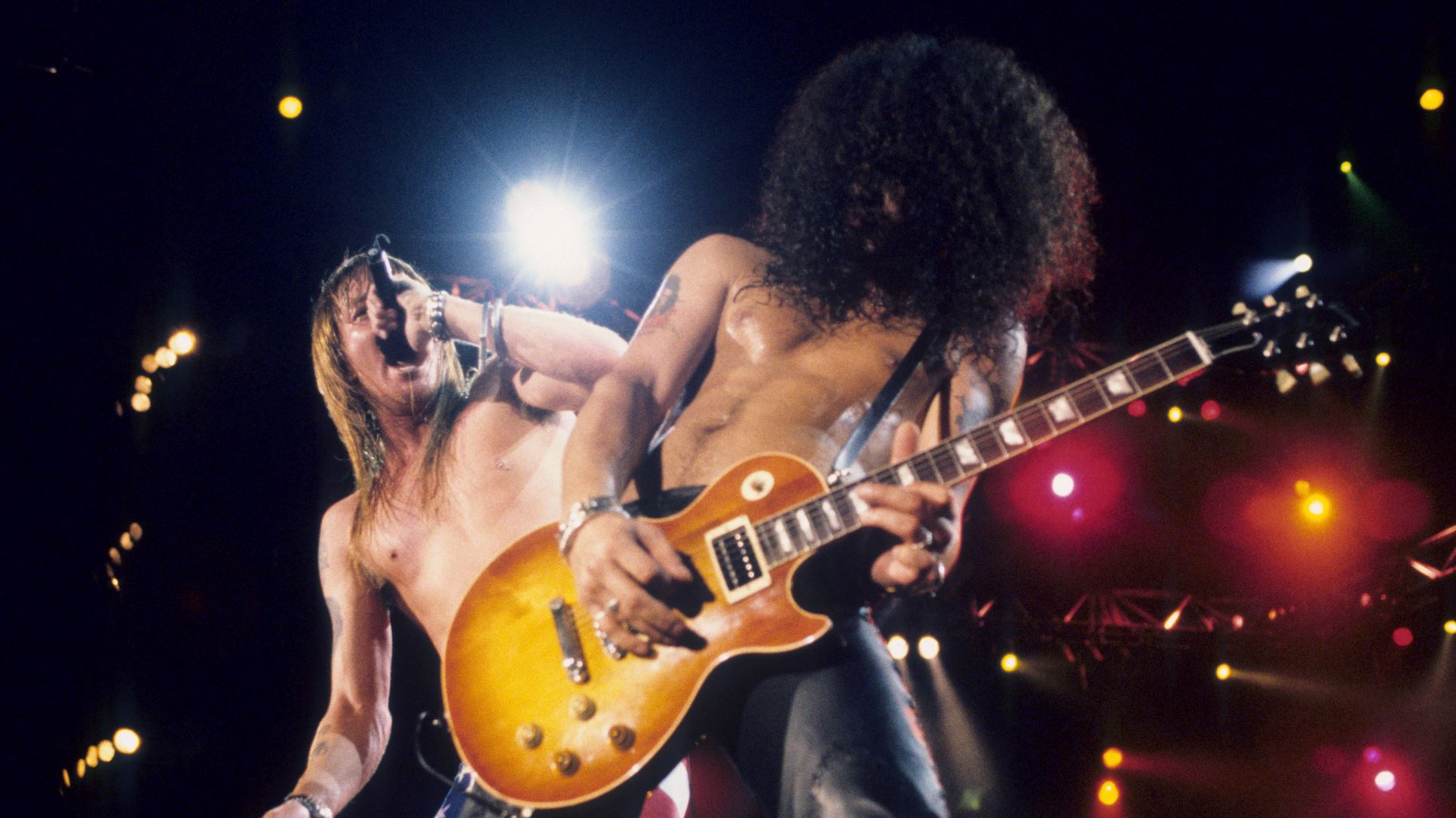
Rumor has it you’ve got a pretty righteous guitar collection.
About 50 guitars. I’m really a guitar freak. I spend money on what – snakes, guitars, and cars? I try not to spend too much on women. I keep everything in storage; I don’t take the really good shit out on the road because things get too banged up. There was a point when I had to take the guitar that I used for Appetite on the road, ‘cause it was the only guitar I had. Now, it’s beat to shit.
The ’59 repro?
Yeah, the hand-made yellow flame-top with zebra [Seymour Duncan] Alnico II pickups. For the first record, I must have gone through 10 guitars trying to find one I liked. And I couldn’t afford to buy some ridiculously expensive Les Paul. When our former manager showed up with this one, it became my main studio guitar.
Did you use it on “Sweet Child O’ Mine”?
All the latest guitar news, interviews, lessons, reviews, deals and more, direct to your inbox!
Yeah. For almost everything on Appetite and then for most of the heavier songs on Use Your Illusion.
You used other guitars on this album?
Some fucking great guitars – a ’58 V and a ’58 Explorer. There’s a certain nasal sound you can hear on “Heaven’s Door,” “Locomotive,” and a couple of other songs – it’s almost [Michael] Schenker-sounding. That’s just the tone control on the V, no wah pedal. There were a couple of other guitars that people aren’t used to hearing me play.
I used one of those small-scale Music Mans like Keith Richards has. There’s a Travis Bean that I use for slide on “Bad Obsession” [Illusion I]. When I first got into slide, I went to a Joe Perry Project show; he had a Travis Bean, and it sounded killer. So when I saw one in the paper, I bought it. It has a gorgeous mahogany body with this real subtle rainbow in the finish – it’s almost airbrushed.
I played maybe 20 different guitars on Use You Illusion: a Strat, a Dobro, a 6-string bass, a banjo, some acoustics. But the sound that I’m recognized for is my Les Paul through a Marshall half-stack.
The sound that I’m recognized for is my Les Paul through a Marshall half-stack.
Slash
Will there ever be a Gibson Slash model?
At one point they had an idea for a Slash Les Paul. I gave them my best live guitar; they had it for six months, trying to get the weight and density and everything right. God bless the guys who worked on it, ‘cause they’re really cool, but they sent me four instruments and none of them sounded anywhere close to it.
I’m sort of pissed off at Gibson, because in the six-odd years that I’ve been with them, I’ve only gotten three gold-tops that I can use live. And I’ve spent hundreds of thousands of dollars on old Gibsons. We just cannot seem to get a sound that I’m happy with from the new ones.
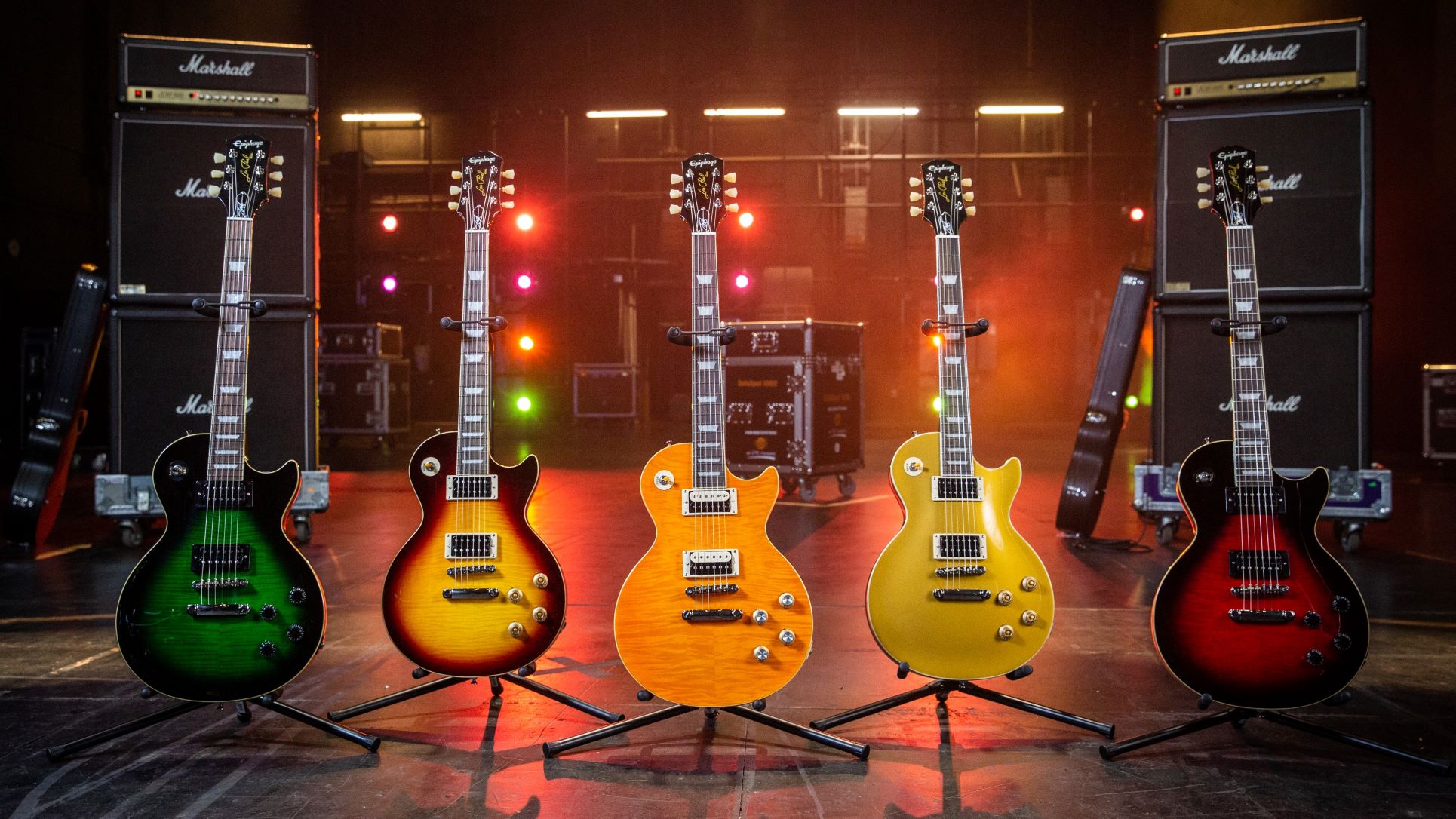
How do you set up to record?
For the basic tracks, I play with the band, using headphones; we’re all in one room. The main goal is to get the bass and drums down. It’s a great vibe and I wish I could record my final tracks that way, but I can’t. I need to be in my own studio – away from where the basic tracks are done – in the control booth. I don’t let anybody in from the band, if I can help it.
On “Shotgun Blues” [Illusion II] Axl and some friends popped in, and I did the solo in one take. Sometimes you just want to fuckin’ jam in front of somebody. Usually no one was in the studio except for Mike [Clink, Producer] and Jim Mitchell, our engineer. That’s really my element. I love it.
What happens after the basic tracks?
I redo all my parts. There are a lot of guitars on the album. Izzy has only one guitar throughout the whole record; he comes out of the left speaker. He recorded most of his stuff during basic tracks. I did all the overdubs and harmonies, plus my regular rhythm track. There are a couple of songs, especially ones I wrote, where I beefed up the tracks over on Izzy’s side, ‘cause he’s got a particular sound that doesn’t necessarily…
…weigh as much.
Yeah, exactly. It falls out of balance. I did all that, the acoustics, and my other instruments in five weeks. For 27 songs, it was pretty quick.

Did you cut all your rhythm tracks and then do all the solos, or did you complete one song at a time?
Because there was so much material, I debated both approaches. But I ended up going in and doing the entire song. If there were four different parts on that song, I just get into it and do ‘em. Otherwise, even if you switch rhythm sounds for each song, you’d end up playing all your rhythms the same. You need to get into one song at a time, so when you go to the next one, it’s a whole different entity.
How do you set up for overdubs?
When I was doing my guitars, I stood out in front of the main monitors with Mike and the engineer. Just blasting as loud as possible.
Playing through the monitors, how did you get you trademark feedback?
That’s a major problem that I’ve been battling for a long time. Normally, you go out into the studio and stand in front of your Marshall. With headphones on you can’t even hear the tracks – I don’t know how people deal with it.
Anyway, my techs came up with a trick. I bet them that it wouldn’t work. They set it up so that I was coming through the monitors and a MESA/Boogie [Mark III combo]. I had the monitor so loud that even though the Boogie was right in front of me, I could still hear the band and sit in the control room. I got a lot of feedback that way.
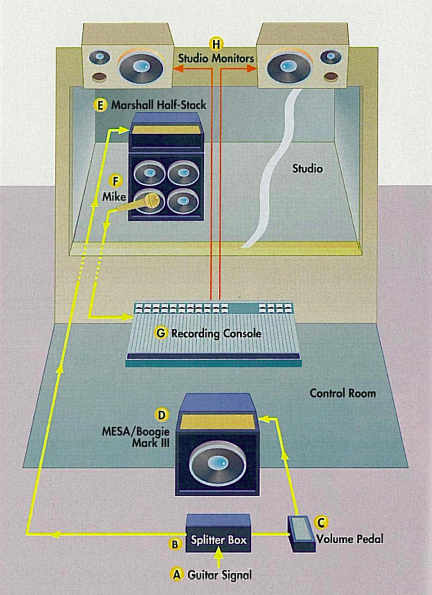
Did you have to stand in certain places?
I’d find a cool spot and put a piece of tape on the ground. Then girls would come down to the studio and hang out. I’d get in the next day and find these shapes on the floor where they’d had a ball with the tape. I was completely confused: “Where’s my spot?” Or somebody would come in and tidy up. I’m like, “Fuck, do not touch anything, leave everything alone!” I love things to be a complete disaster.
For every beer we drank, we’d stick the label on the [control room] glass – we almost covered the whole thing. One day we got to the studio and the manager had cleaned up. The whole environment was shot – all the porn pictures were taken down.
For your Dobro and slide parts, did you play in standard or open tuning?
The Dobro in “You Ain’t The First” [Illusion I] is in standard tuning. I used something I picked up from Keith Richards for “Bad Obsession.” You take the low-E string off and just have five strings. That’s how I play it live, too, in open G [GDGBD, low to high]. I think those are the only slide tunings I used.
And the banjo in “Breakdown” [Illusion II]?
It was a 6-string banjo tuned like a guitar and played with a flatpick. I don’t know shit about real banjo.
Your classical guitar solo at the end of “Double Talkin’ Jive” [Illusion I] is poignant.
Thank you; I enjoyed doing it. That Ramirez was one of my better finds – expensive, but beautiful. It’s really satisfying to heat that the solo has some emotion. It was done pretty quick. Actually, I didn’t spend too much time on anything. It was always one or two takes, more or less. If the intonation was really off, Clink would tell me, and I’d go back and maybe punch in.
But we never spent entire days on guitar solos. We’d take an entire day and do a whole song. Of course, for the really long songs, it would take two days to get all that shit right. But I’d like to think that it was more rock and roll than what most bands are doing these days.
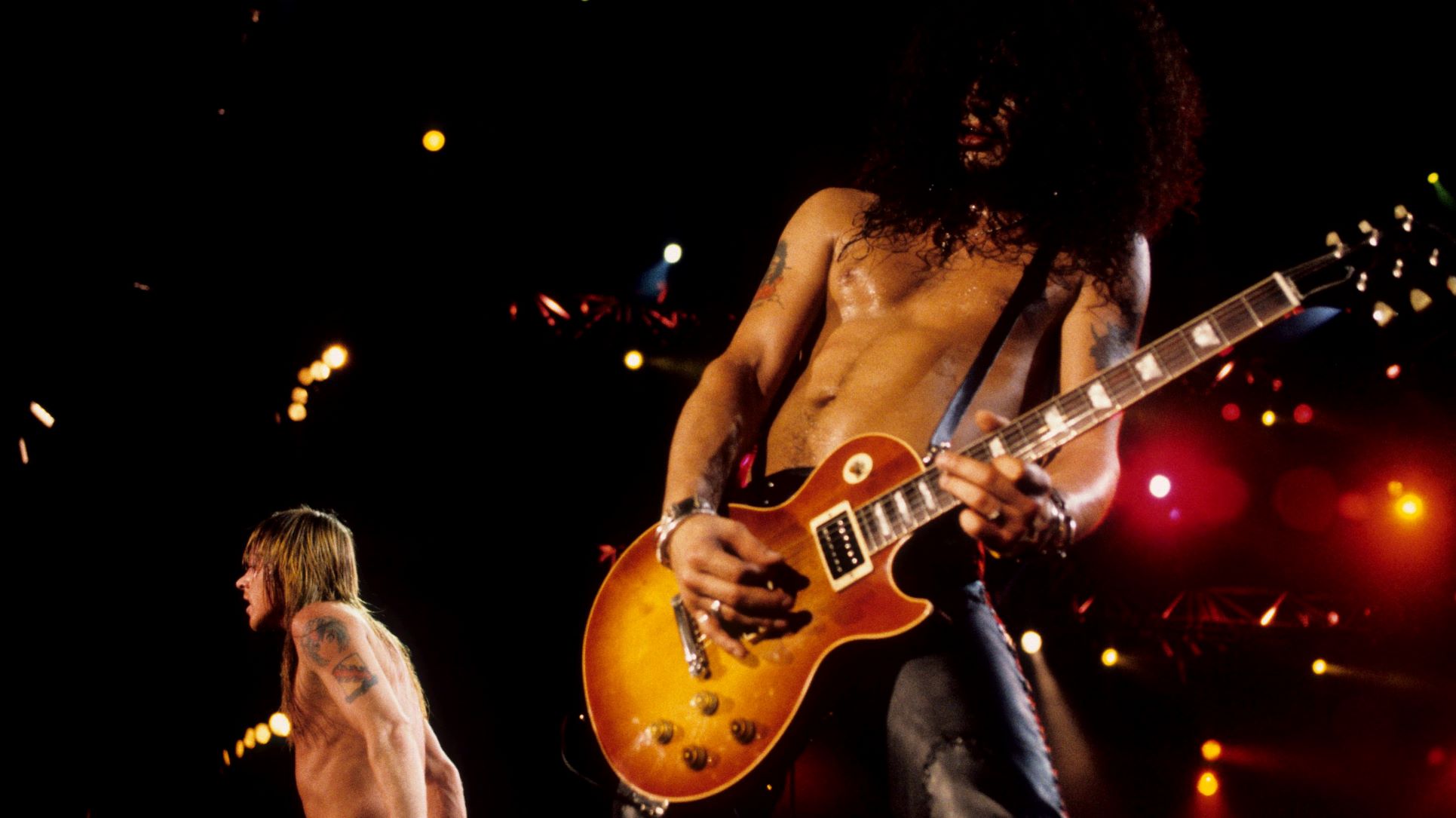
What steel-string acoustics do you play on the album?
I have several Guilds – a nice 12-string and a couple of great big dreadnoughts. I used a Gibson J-100 too.
Do you use the same picks for electric guitar and acoustic guitar?
Yeah. I’m real simpleminded about that. I use the heaviest picks I can find for everything. I don’t believe in switching picks like people switch guitars. It would probably be worthwhile, especially for strumming an acoustic – a thin pick is definitely easier to use.
Mine are purple [Dunlop] Tortex, really rigid. I have to work harder for certain subtle things: Sometimes when I get up the neck to play soft, I really have to pay attention to the pressure I’m putting on the strings to get the right sound, whereas with a light pick you can strum away. But I can’t be bothered to change. And I can’t be bothered with string gauges, either – I stick to Ernie Ball .010s and that’s that. I’m really simple when it comes to equipment. I don’t like to switch around too much.
Browse Guns N' Roses albums here.
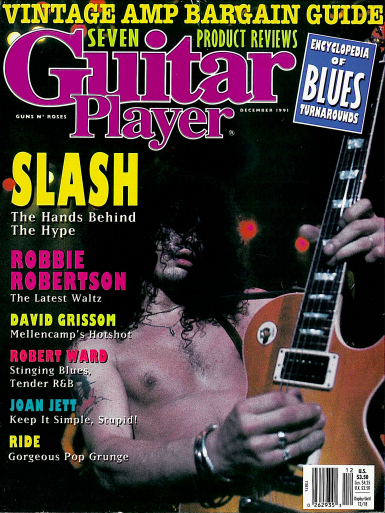
Guitar Player is the world’s most comprehensive, trusted and insightful guitar publication for passionate guitarists and active musicians of all ages. Guitar Player magazine is published 13 times a year in print and digital formats. The magazine was established in 1967 and is the world's oldest guitar magazine. When "Guitar Player Staff" is credited as the author, it's usually because more than one author on the team has created the story.
